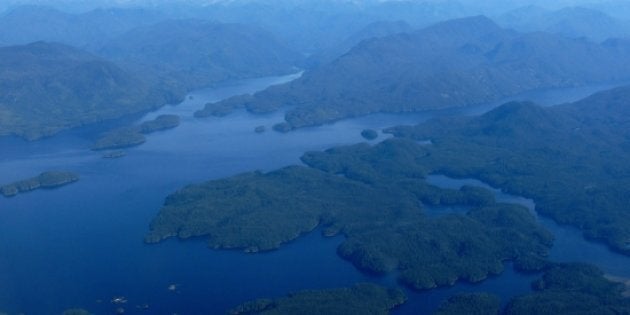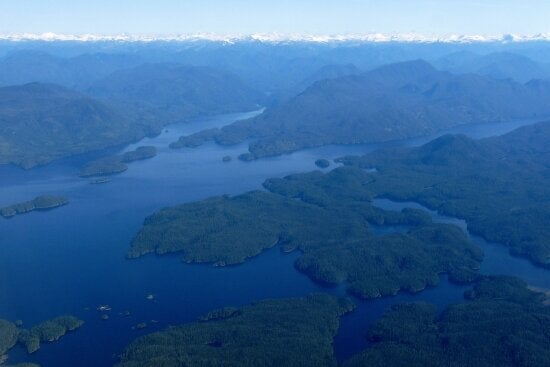
The controversial geo-engineering and salmon restoration project off the coast of Haida Gwaii received more international criticism this month. It was probably dangerous for marine life and likely useless to fight global warming. A plankton bloom resulting from iron fertilization can cause biological upheaval and doesn't provide with any certain long-term carbon sink effect. There are similar doubts over any lasting benefit for declining salmon populations as described by proponents.
The mind-boggling part of the story is that there is no need whatsoever to dump iron into the ocean to support nature to help us in the fight against global warming, especially not along the West Coast of North America. Here, intact coastal rainforests and ocean ecosystems like eelgrass beds are our best allies in the fight against climate change and they don't need fertilizer. They just need protection.
There are few places in the world that store as much carbon per hectare as the mostly intact old growth forests of the Great Bear Rainforest. On the best sites a single hectare of rainforest can store over 1,000 tonnes of carbon in vegetation and soil, much of it accumulated over thousands of years. Values almost double this are known for seagrass meadows. When coastal old-growth is clearcut, up to half of the carbon is released to the atmosphere, with only a small percentage stored in wood products over the long term.

Avoided logging of old growth rainforest is one of the most immediately effective actions to reduce emissions. Contrary to a widespread misconception most old-growth stands continue to sequester carbon , on average two tonnes per hectare annually in temperate climate.
It can take decades until a re-growing forest's ability to sequester carbon makes up for the ongoing annual release of carbon from each clearcut. Time we don't have because the next 10 or 20 years will be crucial for our efforts to reduce emissions and protect carbon sinks in order to avoid out-of-control global warming.
The case of the controversial Haida Gwaii project is fascinating because it's another example of "creative" business minds intervening to "improve" nature's carbon services and speeding up plant growth. The pattern is similar to sketchy tree-planting projects designed to deliver carbon credits for polluters today, assuming that the trees will sequester the projected amount of carbon in future years.
As in economists' circles there appears to be an obsession with the idea of growth vs. preserving something we already have. For some carbon cowboys, it makes more sense to cut down old-growth forest and replace it with young forest, assuming it will sequester more carbon, faster. But this is like giving away a safe and fully filled bank account with a decent interest rate for a start-up bank account with almost zero money and the promise of spectacular growth based on unreliable forecasts.
Fortunately, in the Great Bear Rainforest, a celebrated agreement to set aside 70 per cent of the natural old growth forest is half implemented and work underway to finish the job.
A 2009 study commissioned by Sierra Club BC, Greenpeace and ForestEthics Solutions found that increasing forest conservation outside of protected areas to the agreed to target will help to prevent the release of over 150 million tonnes of carbon dioxide by setting aside old growth forest and allowing second growth forest to recover to old forest.
Logging will continue in the Great Bear Rainforest in ecologically appropriate areas and at sustainable rates, but carbon loss will be reduced by increased conservation and lighter touch logging. It can be further reduced if the forest industry moves towards selective logging, and eliminates wood waste and slash burning.
The $2.5 million sunk into the ocean off Haida Gwaii could have gone a long way to help support the rainforest conservation efforts on the islands and in the adjacent mainland Great Bear Rainforest to ensure that millions of tonnes of carbon continue to be safely stored in trees and soil of some of the oldest and most productive ancient forests of the planet. And contrary to the carbon sink gains claimed for the geo-engineering project the avoided emissions from conserving rainforest are real and can be credibly accounted for.
Rainforest protection also helps salmon populations by conserving salmon spawning and juvenile rearing habitat. Monster storm Sandy was another reminder that we are running out of time to fight global warming, reduce emissions and save our carbon sinks. We can't afford many more mistakes.